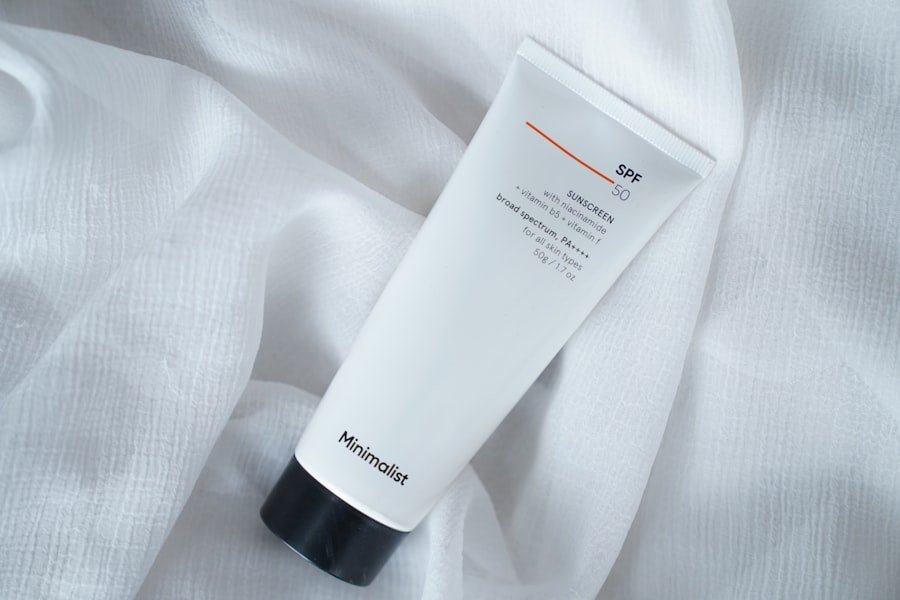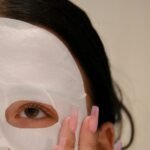Traditional skincare encompasses a rich tapestry of practices and philosophies that have been passed down through generations, often rooted in the cultural and historical contexts of various societies. These methods are not merely cosmetic; they reflect a deep understanding of the skin’s needs and the natural world. From the use of herbal remedies in ancient Chinese medicine to the oil cleansing methods of Ayurvedic practices in India, traditional skincare offers a holistic approach that emphasizes the balance between nature and nurture.
This approach often prioritizes natural ingredients, rituals, and techniques that have stood the test of time, providing insights into how our ancestors cared for their skin. In many cultures, skincare is not just about aesthetics; it is intertwined with spiritual beliefs and communal practices. For instance, in Japan, the concept of “wabi-sabi” embraces the beauty of imperfection and transience, influencing how individuals perceive their skin and its care.
Similarly, in African cultures, the use of shea butter and other natural oils is deeply embedded in social customs and rituals. As modern skincare continues to evolve with technological advancements and synthetic formulations, there is a growing interest in revisiting these traditional methods. This resurgence is not merely a trend but a recognition of the efficacy and wisdom inherent in these age-old practices.
Key Takeaways
- Traditional skincare focuses on natural ingredients and time-tested methods for maintaining healthy skin.
- Ingredients like turmeric, honey, and rose water have been used for centuries in traditional skincare for their various benefits.
- Cleansing rituals from around the world, such as the double cleansing method in Korea, offer unique approaches to keeping the skin clean and clear.
- Traditional nourishing and hydrating methods, like using oils and herbal infusions, can help maintain skin’s moisture and elasticity.
- Incorporating traditional face masks and exfoliation techniques into your skincare routine can help promote healthy, glowing skin.
Understanding Traditional Ingredients and Their Benefits
The ingredients used in traditional skincare are often derived from local flora and fauna, reflecting the biodiversity of each region. For example, aloe vera, a staple in many cultures, is celebrated for its soothing properties and ability to hydrate the skin. Its use can be traced back to ancient Egypt, where it was known as the “plant of immortality.” Similarly, honey has been utilized across various cultures for its antibacterial properties and ability to retain moisture.
The ancient Greeks revered honey not only for its taste but also for its healing qualities, applying it to wounds and using it in beauty treatments. Another significant ingredient is turmeric, widely used in Indian skincare for its anti-inflammatory and antioxidant properties. Turmeric’s active compound, curcumin, has been shown to reduce redness and improve skin tone.
In traditional Ayurvedic practices, turmeric is often combined with other natural ingredients like yogurt or chickpea flour to create masks that cleanse and rejuvenate the skin. The benefits of these traditional ingredients extend beyond mere aesthetics; they often promote overall skin health by addressing underlying issues such as inflammation, dryness, or acne.
Cleansing Rituals from Around the World

Cleansing is a fundamental step in any skincare routine, and traditional methods vary significantly across cultures. In Japan, the double cleansing method has gained popularity, which involves an oil-based cleanser followed by a water-based one. This technique not only removes makeup and impurities but also respects the skin’s natural oils.
The Japanese often incorporate gentle massage techniques during cleansing, enhancing circulation and promoting relaxation. In contrast, the Middle Eastern practice of using black soap made from olive oil and crushed olives offers a different approach to cleansing. This soap is rich in vitamins and antioxidants, providing a deep cleanse while nourishing the skin.
Often used in hammams (traditional bathhouses), this method emphasizes the importance of ritualistic cleansing as a means of purification and rejuvenation. The communal aspect of these rituals fosters a sense of connection among participants, highlighting how cleansing transcends mere hygiene to become a shared experience.
Nourishing and Hydrating the Skin with Traditional Methods
Nourishing the skin is an essential aspect of traditional skincare, often achieved through the use of oils and butters that are rich in vitamins and fatty acids. For instance, argan oil from Morocco has gained international acclaim for its hydrating properties. Traditionally used by Berber women, this oil is extracted from the nuts of the argan tree and is known for its ability to moisturize without clogging pores.
Its high content of vitamin E and essential fatty acids makes it an excellent choice for both skin and hair care. In South Korea, fermented ingredients such as rice water are commonly used to nourish the skin. Rice water is rich in vitamins B and E, as well as antioxidants that promote a healthy complexion.
The practice of using rice water dates back centuries, with historical accounts suggesting that it was used by women in ancient dynasties to maintain their youthful appearance. The fermentation process enhances the bioavailability of nutrients, making them more effective when applied to the skin. This method exemplifies how traditional practices can harness natural processes to enhance skincare efficacy.
Traditional Exfoliation Techniques for Healthy Skin
Exfoliation is crucial for maintaining healthy skin by removing dead skin cells and promoting cell turnover. Traditional methods often utilize natural ingredients that are gentle yet effective. For example, in many Indigenous cultures across North America, ground cornmeal or sugar mixed with honey has been used as a natural scrub.
This combination not only exfoliates but also hydrates the skin, leaving it soft and smooth. In Japan, the use of “sakura” (cherry blossom) powder as an exfoliant reflects a deep appreciation for seasonal changes and natural beauty. The delicate petals are ground into a fine powder that can be mixed with water or other natural ingredients to create a gentle scrub.
This practice highlights how traditional exfoliation techniques are often tied to cultural significance, celebrating local flora while promoting healthy skin.
Incorporating Traditional Face Masks into Your Skincare Routine

Face masks are a beloved component of traditional skincare routines worldwide, offering targeted treatments for various skin concerns. In South Asia, for instance, women have long used multani mitti (fuller’s earth) as a face mask to absorb excess oil and purify the skin. This clay is known for its ability to draw out impurities while providing essential minerals that nourish the skin.
In contrast, the use of green tea in East Asian cultures has gained popularity as a face mask ingredient due to its antioxidant properties. Green tea contains polyphenols that help combat free radicals and reduce inflammation. Traditional practices often involve steeping green tea leaves and applying them directly to the skin or mixing them with honey or yogurt for added benefits.
These masks not only provide immediate results but also reflect a cultural appreciation for natural remedies that promote long-term skin health.
Traditional Techniques for Treating Acne and Blemishes
Acne treatment has been approached through various traditional methods that emphasize natural remedies over synthetic solutions. In Chinese medicine, for example, herbal formulations containing ingredients like licorice root and chrysanthemum are commonly used to address acne-related issues. These herbs are believed to have cooling properties that help reduce inflammation and balance excess oil production.
Similarly, in Ayurveda, neem leaves are revered for their antibacterial properties and are often used in pastes or oils to treat blemishes. Neem’s effectiveness lies in its ability to combat bacteria while soothing irritated skin. Traditional practices often involve creating personalized remedies based on individual skin types and conditions, showcasing a holistic approach that considers both internal health and external appearance.
Protecting the Skin from the Sun using Traditional Wisdom
Sun protection is a critical aspect of skincare that has been addressed through traditional methods long before modern sunscreens became available. In many tropical regions, coconut oil has been used as a natural barrier against UV rays due to its high-fat content and antioxidant properties. While it may not provide complete protection against sunburns or skin damage, it serves as a moisturizing agent that can help soothe sun-exposed skin.
In India, turmeric paste is sometimes applied before sun exposure as a protective measure against sun damage. Its anti-inflammatory properties can help mitigate redness caused by sun exposure while providing a natural glow to the skin. These traditional practices highlight how cultural knowledge has evolved over time to address environmental challenges while promoting healthy skin.
Anti-Aging Practices Rooted in Traditional Skincare
The quest for youthful skin has led many cultures to develop anti-aging practices rooted in tradition. In Japan, the use of camellia oil has been celebrated for centuries as an effective moisturizer that helps maintain skin elasticity. Rich in oleic acid and antioxidants, camellia oil penetrates deeply into the skin, providing hydration while reducing the appearance of fine lines.
In Mediterranean cultures, olive oil has long been regarded as a fountain of youth due to its high content of monounsaturated fats and antioxidants like vitamin E. Traditionally used not only in cooking but also in skincare routines, olive oil serves as both a moisturizer and an anti-aging agent. These practices underscore how traditional wisdom can inform modern approaches to skincare by emphasizing natural ingredients that promote longevity.
Mind-Body Connection: Traditional Skincare as a Ritual of Self-Care
Traditional skincare often transcends physical care; it embodies a holistic approach that nurtures both body and mind. Many cultures view skincare rituals as moments of self-care that foster mindfulness and relaxation. In India, Ayurvedic practices encourage individuals to engage in daily rituals that include not only skincare but also meditation and yoga.
This integration promotes overall well-being by addressing stress levels that can impact skin health. Similarly, in Korean culture, skincare routines are often seen as an opportunity for self-reflection and self-love. The meticulous layering of products serves not only to enhance beauty but also to cultivate a sense of calmness and intentionality in daily life.
These rituals highlight how traditional skincare practices can serve as powerful tools for enhancing mental health while promoting physical beauty.
Embracing Traditional Skincare in a Modern World
As modern consumers become increasingly aware of the potential drawbacks of synthetic ingredients and harsh chemicals found in many commercial products, there is a growing movement towards embracing traditional skincare methods. This shift reflects a desire for authenticity and sustainability in beauty routines. Many brands now incorporate traditional ingredients into their formulations while emphasizing ethical sourcing practices that honor cultural heritage.
Influencers share their experiences with ancient remedies from various cultures, sparking interest among diverse audiences eager to explore these time-honored practices. As individuals seek more meaningful connections with their skincare routines, traditional methods offer an opportunity to reconnect with nature while celebrating cultural diversity in beauty practices.
In conclusion, traditional skincare represents a wealth of knowledge accumulated over centuries across different cultures worldwide. By understanding these practices—ranging from cleansing rituals to nourishing treatments—we can appreciate the depth of wisdom they offer while integrating them into our modern lives for healthier skin.









